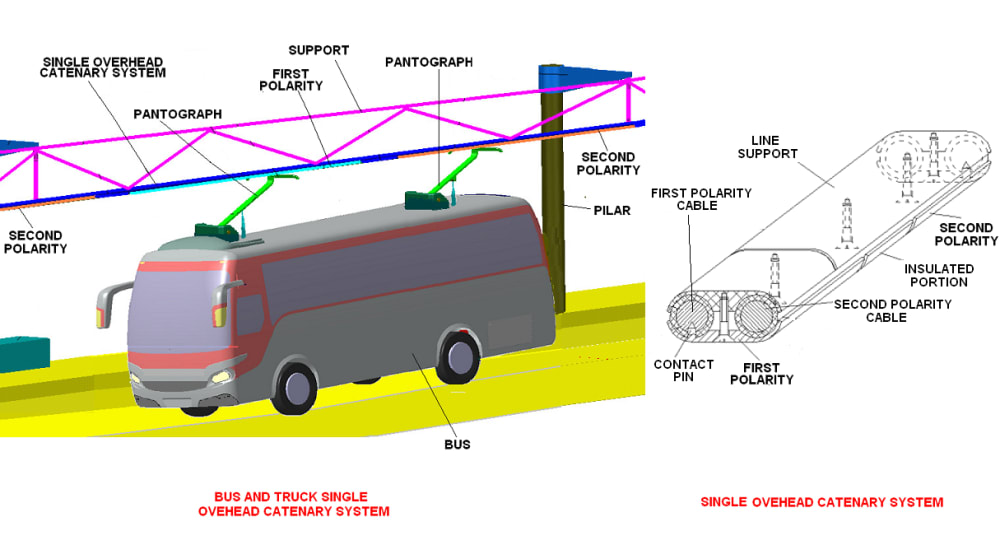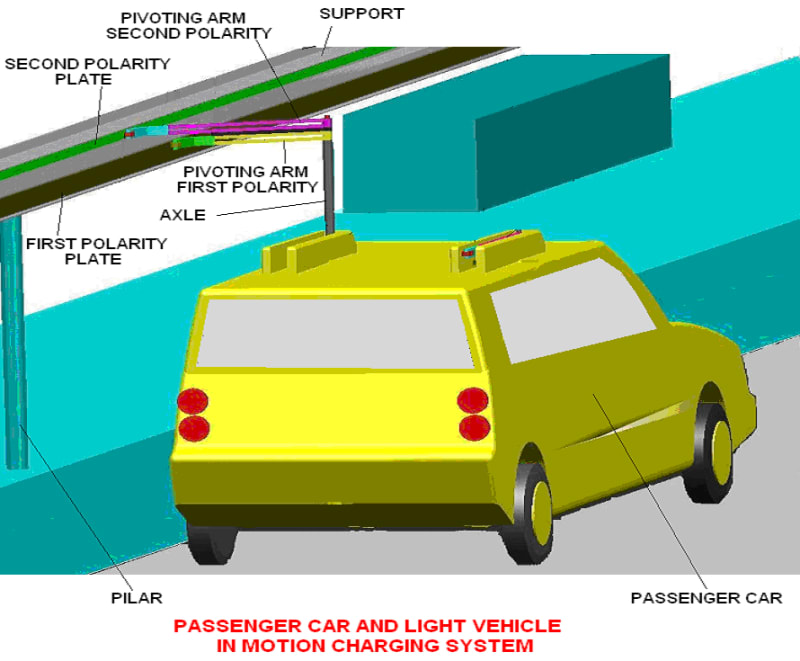It is known that usually electric vehicles named trolleybuses can circulate on ways shared by general urban traffic, but that they will have to follow imperatively the trajectory imposed by their source of energy supply, a feeder usually named catenary (dual overhead line) system. This “in motion charging system” limits the vehicle speed at 70 Km/h and consequently the trolleybus cannot be used on highways.
A new solution is proposed by the Hybrid Transport System - HTS , which seems to solve the main problems of trolleybus (see also http://www.hybrid-engine-hope.com/hybrid_transport_system). A truck (or bus) hybrid powertrain can have a supplementary electrical source through one overhead line (containing both polarities) thus becoming completely electrically powered on electrified road (highway) sections. Each heavy vehicle has two pantographs distanced between them, each pantograph supplying the powertrain with one polarity. The single overhead line contains a first polarity in some of its portion, followed by a small insulated portion, followed by another portion which contains the second polarity. This succession is repeated on all the length of the overhead line. The distance between two similar polarities is chosen a little be bigger than the distance existent between the two pantographs of the heavy vehicle. Same road can supply the passenger cars (or light vehicle) with a different system containing two separated polarities. All these vehicles can be also driven by an additional internal combustion engine, by a small battery package or by ultracapacitors when is operated outside of the electric charging network. HTS uses the first road lane for the heavy vehicles and the last road lane (middle road lane) for passenger cars. The modified highways and roads for HTS remain compatible with the current vehicles. With such a system, the following cumulative advantages are obtained:
-The possibility to eliminate the expensive and heavy traction batteries from the hybrid vehicle. That reduces drastically the price of the hybrid vehicle.
-In normal working conditions is a zero-emission transport system. "Greenhouse" gas emissions, believed to contribute to global warming, are completed eliminated.
-The vehicle speed is not limited by the “in motion” charging system.
-The system permits a complete path freedom among two consecutive electric charging stations, from the road to the garage or in the case of lack of electrical power at the stations.
Market potential
HTS can replace the actual system based on conventional vehicles. Using this system the hybrid or pure electric vehicles become cheaper and accessible for the clients.
Manufacturing process
All the components of the HTS contained in infrastructure and hybrid vehicles are in current production. There are not exotic materials or technology used for this system.
HTS costs
Missing the expensive battery pack, the hybrid vehicles used by HTS are cheaper than the current hybrid vehicles, so more affordable for consumers. The cost of the infrastructure will be quickly recovered by the users. These users also will have a low cost to pay for the electric energy.
Like this entry?
-
About the Entrant
- Name:Liviu Grigorian Giurca
- Type of entry:individual
- Software used for this entry:Catia 4 and V5
- Patent status:pending








